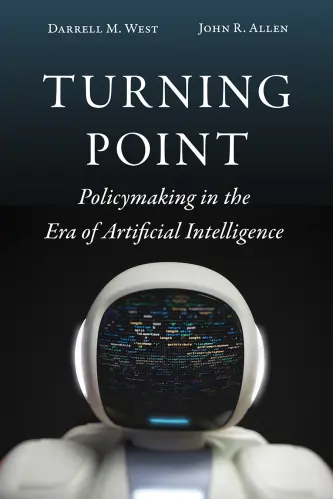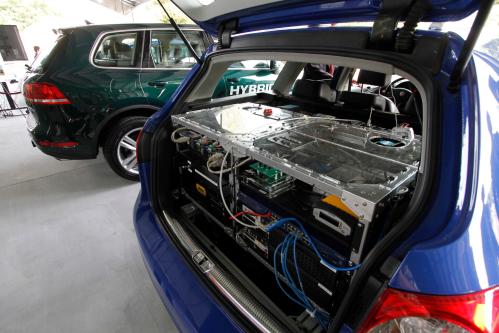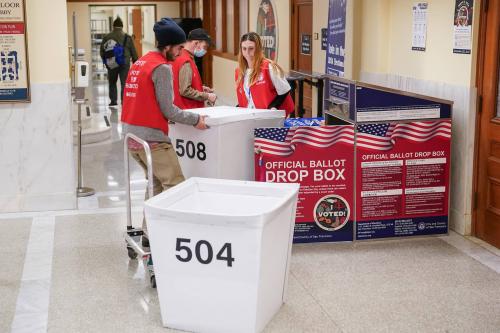In the two years since this blog post was published, Virginia is the only state that has replaced its paperless voting machines statewide (Updated 11/6/2018).
During the 2016 presidential campaign, commenters have often questioned the fairness of the election process, accusing both foreign hackers and domestic political opponents of rigging the system in the favor one candidate or another. However, fears of a rigged election are overblown considering the difficulty of manipulating vote tallies from thousands of jurisdictions with their own procedural safeguards. The localized nature of election management prevents widespread tampering, but voting technology in use today is still far from perfect. Direct Recording Electronic (DRE) voting machines are prone to software bugs that can leave many votes uncounted, which delays reporting and casts doubt on the results of close races. Ensuring the integrity of elections requires contingency plans in case of human or machine error.
DRE machines are aging
The push for DRE machines began in the wake of the Supreme Court’s Bush v. Gore decision on the outcome of the 2000 presidential election. That year, ballots in Florida were plagued with incomplete punches called “hanging chads” that rendered many unreadable. To avoid ambiguous ballots, Congress allocated over $3 billion to upgrade voting equipment though the Help America Vote Act of 2002. Currently, counties in 29 states and the District of Columbia have adopted DRE machines, which can count votes in real time, but create new issues when verifying vote tallies. Machines in only 18 states print out a voting receipt that provides a paper trail for manual auditing, which leaves machines in 12 states that do not use a paper trail. That leaves no option for an audit if results are challenged.
DRE machines present unique information technology issues for local governments that use them. Counties that purchased new machines using federal funds in the early 2000s now lack funds to regularly replace them. A consequence of these aging electronic voting machines is the increasing vulnerability of their software, as legacy operating systems on decade-old machines no longer receive support from software publishers. While most computers or smartphones automatically download software updates online, voting machines are never connected to the internet for security reasons. Remaining offline prevents tampering, but also makes fixing internal bugs more difficult. Though electronic voting machines perform a simple computational task, they still feature the complexity of any information technology system.
Alternatives to DRE machines
Electronic voting machines solved a specific issue with punch-card ballots, but many states still use other forms of paper ballots. Optical-scan paper ballots are automatically tabulated by a computer and create a paper trail for audits. Paper ballots can also be sent directly to voters: Oregon, Washington, and Colorado hold all elections by mail, and a further 27 states and DC offer absentee ballots without an excuse. Given issues with privacy, cybersecurity, and verification, it’s unlikely that the U.S. will adopt online voting in elections any time soon. However, Texas allows NASA astronauts living near Johnson Space Center in Houston to vote by secured electronic ballot when missions take them to low-Earth orbit during an election.
Though voting technology takes many forms, its integrity depends on procedures for auditing equipment and election results. States should practice procedures before and after ballots have been cast to ensure the integrity of elections, regardless of the technology used. Before elections, voting machines should be checked for potential errors, including software malfunctions by DRE machines. Once polls have closed, states should have an audit system in place to check the accuracy of results in tight races. Several states go even further by requiring recounts ballots manually in a random sampling of precincts in every election. Errors can happen in any system as complex as a national election, so it is vital that states prepare in advance for potential problems.









Commentary
How to save election technologies from “hanging chads” and software malfunctions
November 8, 2016